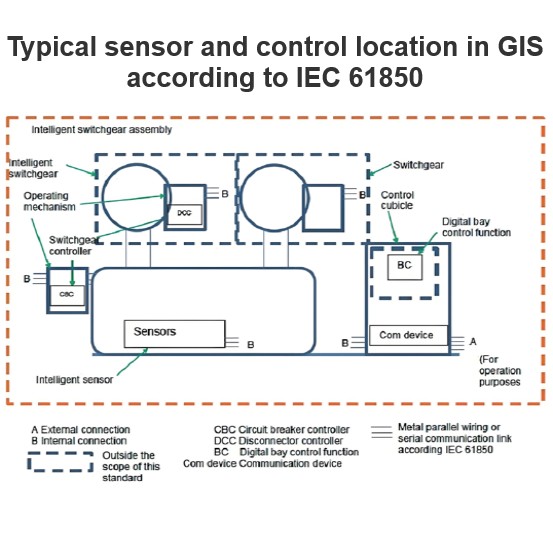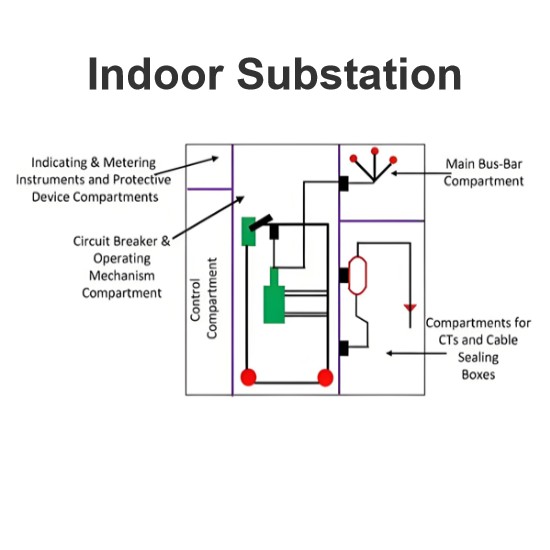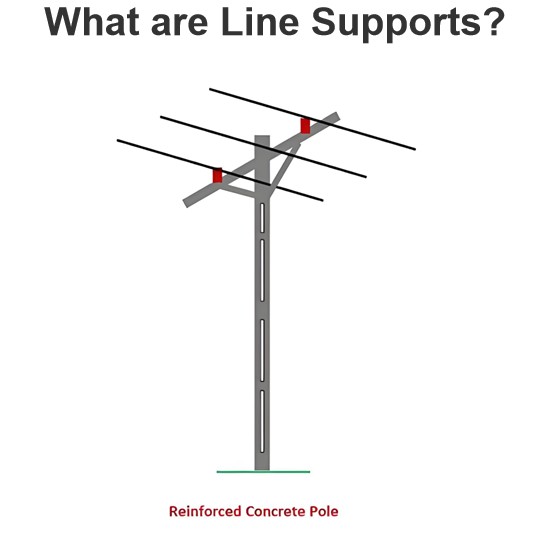Classification of Substations
Substations: An Overview of Power Transfer Hubs
A substation serves as a crucial intermediary in the power delivery process, facilitating the transfer of electrical energy from the generation source to end - users. It is equipped with various essential components, including transformers, generators, and power cables, all of which play integral roles in ensuring efficient power transmission. The core functions of a substation encompass power generation, transmission, and distribution.
Substations that generate electrical power are known as generating substations. Transmission substations, on the other hand, are responsible for relaying power over long distances, while distribution substations focus on delivering power to individual loads. Below, we will explore the different subcategories of electrical substations in detail.
Classifications of Substations
Substations can be classified in multiple ways, including by the nature of their duties, the services they render, operating voltage levels, importance, and design.
Classification of Substations by Nature of Duties
Step-up or Primary Substations
Step-up or primary substations generate relatively low voltages, typically in the range of 3.3 kV, 6.6 kV, 11 kV, or 33 kV. To enable efficient long - distance power transmission, these voltages are elevated using step-up transformers. These substations are usually located in close proximity to generating substations, acting as the first stage in the power transmission hierarchy.
Primary Grid Substations
Primary grid substations receive the high voltages that have been initially stepped up. Their role is to reduce these primary stepped-up voltages to a more manageable level. The output of primary grid substations then serves as the input for secondary substations, which further step down the voltage for subsequent transmission.
Step-down or Distribution Substations
Step-down or distribution substations are strategically positioned near load centers. Here, the primary distribution voltage is reduced for sub-transmission purposes. Secondary distribution transformers within these substations then supply power to consumers via service lines, completing the power delivery process at the local level.
Classification of Substations by Service Rendered
Transformer Substations
Transformer substations are equipped with transformers designed to transfer electrical power from one voltage level to another as per the requirements of the power grid. This flexibility allows for seamless integration of different power systems operating at varying voltage standards.
Switching Substations
Switching substations are specifically designed to switch power lines on and off without disrupting the voltage levels. They are typically situated along transmission lines, enabling the redirection of power flow, isolation of faulty sections, and optimization of grid operations.
Converting Substations
Converting substations are specialized facilities that can convert alternating current (AC) power to direct current (DC) and vice versa. Additionally, they may also be used to adjust the frequency of electrical power, converting high frequencies to lower frequencies or vice versa, to meet specific operational needs.
Classification of Substations by Operating Voltage
High Voltage Substations (HV Substations)
High Voltage Substations operate within a voltage range of 11 kV to 66 kV. These substations are essential for distributing power within local areas and connecting different parts of the medium - voltage power grid.
Extra High Voltage Substations
Extra High Voltage Substations handle voltages ranging from 132 kV to 400 kV. They play a critical role in the long - distance transmission of large amounts of electrical power, linking major power generation sources with regional grids.
Ultra High Voltage Substations
Ultra High Voltage Substations operate at voltages exceeding 400 kV. These high - capacity substations are used for transmitting bulk power over extremely long distances, often across large geographical regions or between different power grids.
Classification of Substations by Importance
Grid Substations
Grid substations are responsible for transferring large quantities of electrical power from one location to another. Due to their critical role in the power grid, any fault or disruption in a grid substation can have a significant impact on the continuity of power supply across the entire network.
Town Substations
Town substations are tasked with stepping down voltages, typically from 33 kV to 11 kV, to facilitate power distribution within urban areas. A malfunction in a town substation can lead to a complete power outage for an entire town, highlighting their importance in local power delivery.
Classification of Substations by Design
Indoor Type Substations
In indoor type substations, all electrical apparatus is installed within an enclosed building structure. These substations are commonly used for voltage levels up to 11 kV. However, in environments where the surrounding air is contaminated with dust, fumes, or harmful gases, their voltage capacity can be extended to 33 kV or 66 kV to protect the equipment from adverse environmental conditions.
Outdoor Substations
Outdoor substations can be further divided into two main categories:
Pole Mounted Substations: Pole mounted substations are primarily used for local power distribution. Depending on the capacity of the transformers, single stout poles, H - poles, or 4 - pole structures with appropriate platforms are utilized. Transformers with capacities of up to 25 kVA, 125 kVA, and above 125 kVA can be accommodated on these structures.
Foundation Mounted Substations: Foundation mounted substations are designed for installing transformers with higher voltage ratings, typically 33,000 volts or above. These substations provide a stable and robust foundation to support the heavy and large - scale equipment required for high - voltage power operations.
The Electricity Encyclopedia is dedicated to accelerating the dissemination and application of electricity knowledge and adding impetus to the development and innovation of the electricity industry.













